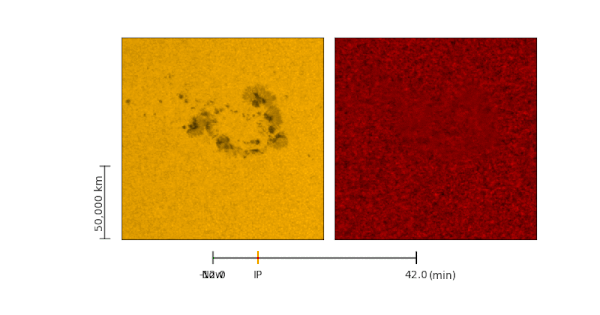Sunquakes likely triggered deep beneath solar surface
Scientists previously thought the quakes were driven by magnetic forces in the sun's atmosphere.

Scientists have uncovered new details about the mysterious origin of seismic activity on the sun during solar flares.
The sun intermittently unleashes electromagnetic energy in bright, sudden explosions known as solar flares. In the wake of such an event, scientists have observed seismic activity, also known as sunquakes, which release acoustic energy in the form of waves that ripple along the sun’s surface, like waves on a lake, according to a statement from NASA.
Scientists originally thought sunquakes were driven by magnetic forces in the sun's outer atmosphere, where solar flares occur. However, data from NASA’s Solar Dynamics Observatory spacecraft, or SDO, shows that the seismic activity is triggered deep beneath the solar surface.
Related: 10 sun discoveries from NASA's Solar Dynamics Observatory
SDO launched in 2010 to study sunspot and solar activity. On July 30, 2011, the spacecraft observed "unusually sharp ripples emanating from a moderately strong solar flare," according to the NASA statement.
Using the Helioseismic and Magnetic Imager instrument aboard SDO, scientists were able to trace the seismic activity to a source 700 miles (1,130 kilometers) below the sun's surface. The instrument uses a technique called helioseismic holography, which measures movement along the solar surface.

“Instead of the waves traveling into the sun from above, the scientists saw the surface ripples of a sunquake emerging from deep beneath the solar surface right after a flare occurred,” NASA officials said in the statement.
Get the Space.com Newsletter
Breaking space news, the latest updates on rocket launches, skywatching events and more!
The solar flare activity in the sun’s outer atmosphere is believed to trigger a submerged source, which, in turn, fuels the seismic activity observed at the sun’s surface. However, the exact mechanisms behind sunquakes remain largely unknown. Scientists plan to study additional sunquakes to identify the source that originates beneath the solar surface.
Their findings were published last September in The Astrophysical Journal Letters.
Follow Samantha Mathewson @Sam_Ashley13. Follow us on Twitter @Spacedotcom and on Facebook.
Join our Space Forums to keep talking space on the latest missions, night sky and more! And if you have a news tip, correction or comment, let us know at: community@space.com.

Samantha Mathewson joined Space.com as an intern in the summer of 2016. She received a B.A. in Journalism and Environmental Science at the University of New Haven, in Connecticut. Previously, her work has been published in Nature World News. When not writing or reading about science, Samantha enjoys traveling to new places and taking photos! You can follow her on Twitter @Sam_Ashley13.









